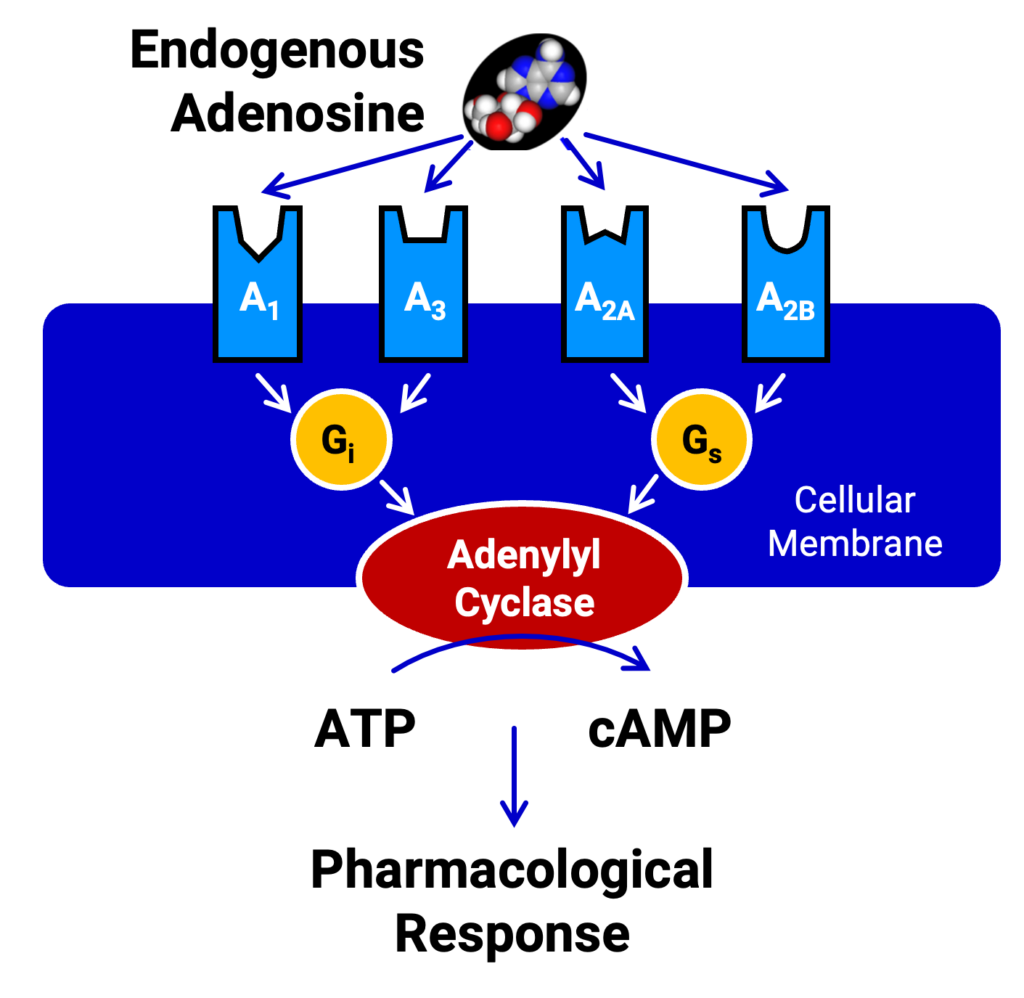About Adenosine

Adenosine is usually the product of the hydrolysis of extracellular adenosine triphosphate (ATP) and is widely distributed in the human body. It causes or modulates a variety of functions, including cell growth, heart rhythm, immune function, sleep regulation, and angiogenesis. Adenosine acts by activating specific G protein-coupled receptors (GPCRs), which are divided into four subtypes: the adenosine 1 receptor (A1R), adenosine 2A receptor (A2AR), adenosine 2B receptor (A2BR), and adenosine 3 receptor (A3R). Extensive investigations over the past 40 years have identified numerous effects of the adenosine receptors as shown below, identifying them as potential drug targets for treating numerous diseases.

A1 Receptor Effects
Cardiac
-
Negative inonotrobic
-
Negative chornotrophic
Brain
-
Reduced neuronal excitation
-
Sleep induction
-
Reduce seizures
Adipose Tissue (fat)
-
Antilipolytic

A2A Receptor Effects
Blood Vessels
-
Vasodilatation
Brain
-
Regulation of locomotion
-
Sleep
Blood Cells
-
Reduced cytokine release
-
Reduced T-cell activation
-
Reduced platelet activation

A2B Receptor Effects
Cancer: Myloid/ Dendritic Cells
-
Reduced antigen presentation
-
Reduced IL-12
Cancer: Tumors
-
Reduced cell adhesion
Endothelial/Epithelial cells, Fibroblasts
-
Enhanced IL-6 release
Adipose tissue (fat)
-
Enhanced lipolysis
Mast cells
-
Degranulation (primates)
Other
-
Pain enhancement (allodynia)

A3 Receptor Effects
Degranulation
-
Mast cells/Basophils (rodents)
-
White blood cells (Eosinophils)
Brain
-
Reduced neuropathic pain
Testis
-
Sperm motility
